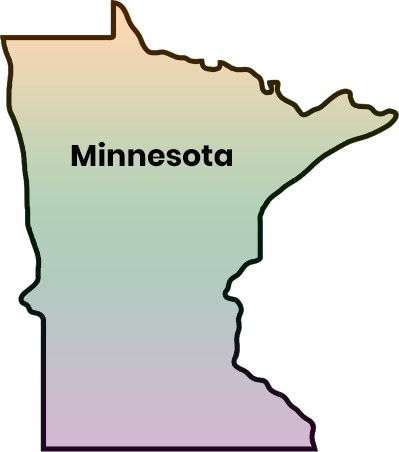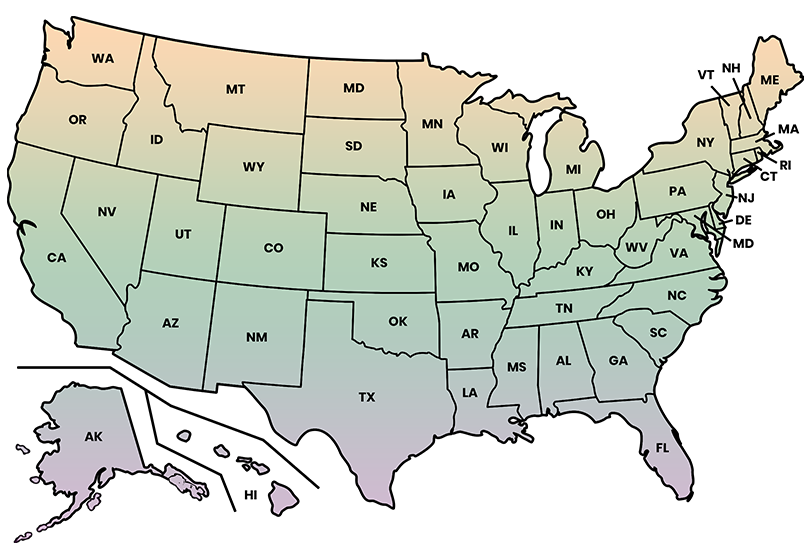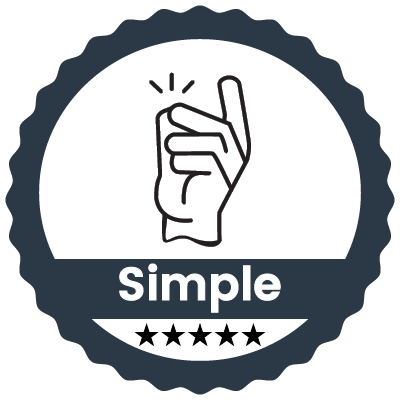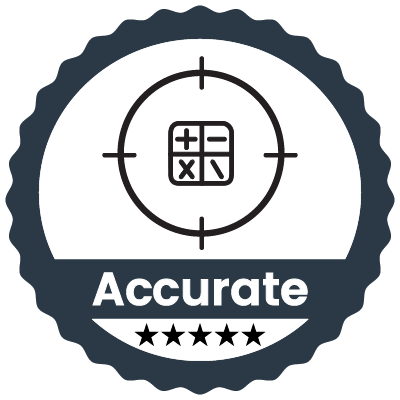Before distributing pay stubs to employees and contractors in Minnesota, it's crucial to be well-versed in the state's regulations governing payroll. Understanding these laws is essential for compliant business operations.
This guide aims to elucidate the pertinent statutes and regulations that employers must adhere to when managing payroll and dispensing pay stubs in Minnesota.

Pay stub regulations in Minnesota
1. Are pay stubs required by law in Minnesota?
Employers in Minnesota must provide their employees with pay stubs every payday.
2. How often do you need a pay stub in Minnesota?
You will need to pay your employees at least once every 31 days. As pay stubs are mandatory in Minnesota, you will need to provide pay stubs every time you pay your employees.
3. What information can be included on a pay stub in Minnesota?
The following information must be included in employee pay stubs:
- Employee name
- Hourly rate of pay (if applicable);
- Employee work hours unless exempt from Minnesota Statutes chapter 177;
- Gross pay for the pay period;
- A list of deductions made from the employee's pay;
- Net pay after all deductions are made;
- Pay period end date; and
- The legal name of the employer and the operating name of the employer if different from the legal name.
4. Does Minnesota have a state income tax?
Yes, state income taxes are applicable to employees in the state of Minnesota.
5. Are there any other taxes applicable to Minnesota?
No. There are no local taxes in the state of Minnesota.
Information needed to generate pay stubs
To provide employees with accurate pay stubs, the information below is required.
- Employee's exemption status from state withholding
- Filing status, total allowances, and additional state withholding amount.
Minnesota wage and hour laws
In Minnesota, employers are obligated to comply with wage and hour regulations, ensuring that non-exempt employees are paid at least minimum wage, receive appropriate compensation for overtime work, are granted adequate meal and rest breaks, and accrue rightful paid time-off benefits.
These regulations cover multiple aspects of employment legislation.
Minnesota Minimum wage
As of 2024, Minnesota law dictates that employers must adhere to minimum wage requirements, ensuring all workers are compensated at least the prescribed hourly rate. These rates are subject to annual adjustments based on a predetermined formula.
- Employers categorized as large enterprises, with annual revenues exceeding $500,000, must pay a minimum of $10.85 per hour
- Small enterprises, with revenues below $500,000, must pay a minimum of $8.85 per hour.
Effective January 1, 2025:
- The minimum wage for large employers will increase to $11.13 per hour.
- The minimum wage for small employers will also increase to $11.13 per hour.
Overtime pay
Under the Minnesota Fair Labor Standards Act, all employers are obligated to compensate overtime for hours worked beyond 48 hours within a seven-day timeframe, irrespective of their gross annual revenue. Overtime rates must be at least one-and-a-half times the employee's regular pay rate. The regular pay rate is calculated by dividing the total pay received by the employee in any given workweek by the total hours worked during that period.
Meal break and Rest break
Employees who work 8 hours or more are entitled to a meal break, during which they have sufficient unpaid time for eating. However, if the meal break duration is less than 20 minutes, it must be compensated. Additionally, employees are entitled to rest breaks every 4 hours.
Paid time off and leave
In Minnesota, employers are required to provide employees with a variety of leave benefits, which encompass both obligatory and optional choices.
| Required Leave | Non-Required leave | |
|---|---|---|
| paid | Unpaid | Paid or Unpaid |
| Bone Marrow and Organ Donation Leave | Employers might need to offer employees unpaid leave as mandated by the federal Family and Medical Leave Act. | Vacation leave |
| Voting leave | Jury duty leave | Bereavement leave |
| Military leave | Holiday leave | |
| Parental Leave | ||
| Family of injured military personnel leaves | ||
Minnesota State payroll taxes 2025
In Minnesota, payroll taxes are classified as:
- Minnesota Personal Income Tax(PIT)
- Minnesota State Unemployment Insurance (UI)
Minnesota Personal Income Tax(PIT)
In Minnesota, state personal income tax rates vary according to an individual's filing status and income level. Filing statuses can include Single, Married Filing Separately, Married Filing Jointly, and Head of Household.
Minnesota 2024 Income Tax Rates and Brackets
In Minnesota, the income tax brackets for the year 2024 undergo an annual recalculation based on the state's inflation rate, as mandated by state law. This process involves adjusting the indexed brackets using the inflation factor and rounding the results to the nearest $10. Additionally, the state's income tax rates are established by legal statutes.
| Rate | Married filing jointly | Married filing jointly | Married filing separately | Married filing separately |
|---|---|---|---|---|
| More Than | But not more than | More than | But not more than | |
| 5.35% | $0 | $46,330 | $0 | $23,165 |
| 6.80% | $46,330 | $184,040 | $23,165 | $92,020 |
| 7.85% | $184,040 | $321,450 | $92,020 | $160,725 |
| 9.85% | $321,450 | $160,725 |
| Rate | Head of household | Head of household | Single | Single |
|---|---|---|---|---|
| More Than | But not more than | More than | But not more than | |
| 5.35% | $0 | $39,010 | $0 | $31,690 |
| 6.80% | $39,010 | $156,760 | $31,690 | $104,090 |
| 7.85% | $156,760 | $256,880 | $104,090 | $193,240 |
| 9.85% | $256,880 | $193,240 |
Minnesota 2025 Income Tax Rates and Brackets
Minnesota’s income tax rates for 2025 are based on your filing status and income. These brackets are updated yearly for inflation, and you pay a higher tax rate only on the income that falls within each bracket.
| Filing Status | Income Range | Tax Rate |
|---|---|---|
| Married Filing Jointly | $0 to $47,620 | 5.35% |
| $47,621 to $189,180 | 6.80% | |
| $189,181 to $330,410 | 7.85% | |
| Over $330,410 | 9.85% | |
| Married Filing Separately | $0 to $23,810 | 5.35% |
| $23,811 to $94,590 | 6.80% | |
| $94,591 to $165,205 | 7.85% | |
| Over $165,205 | 9.85% | |
| Single | $0 to $32,570 | 5.35% |
| $32,571 to $106,990 | 6.80% | |
| $106,991 to $198,630 | 7.85% | |
| Over $198,630 | 9.85% | |
| Head of Household | $0 to $40,100 | 5.35% |
| $40,101 to $161,130 | 6.80% | |
| $161,131 to $264,050 | 7.85% | |
| Over $264,050 | 9.85% |
Minnesota State Unemployment Insurance (UI)
In Minnesota, the State Unemployment Tax Act (SUTA) was established to aid individuals encountering unemployment by offering unemployment benefits. This legislation empowers the state to gather the necessary funds for disbursing unemployment insurance benefits to eligible individuals who are without employment.
In 2025, SUTA rates in Minnesota span from 0.40% to 8.90%, with a taxable wage base set at $43,000.
Minnesota payroll tax filing
- Report of New hire Employees
- Report of New hire Independent Contractors
- Minnesota Personal income tax filing(form M1)
- Minnesota Quarterly wage report
Report of New hire Employees
Employers are required to report all newly hired, re-hired, and returning to work employees to the Minnesota Department of Human Services within 20 days of their hiring, rehiring, or return to work date. For electronic submissions, employers must transmit these reports in two monthly transmissions, with no more than 16 days between each submission.
Report of New hire Independent Contractors
TheFor state agencies and all governmental entities within the state, it is mandatory to report independent contractors according to the Minnesota State Work Reporting System. However, this requirement excludes Federal Government Agencies. For all other employers or payers of funds, it is optional but strongly encouraged to have independent contractors fill out the 1099 form.
How to report employees' and independent contractors' new hire in Minnesota?
You have a range of reporting methods to select from when submitting new hire information.
| Online | Fax | |
|---|---|---|
| Employees and independent contractors New Hire Report | Address Information: P.O. Box 64212 St. Paul, MN 55164 Public Phone:800-672-4473 | Fax 1: 800-692-4473 |
Minnesota Personal income tax filing(form M1)
The Minnesota Department of Revenue will begin accepting state Individual Income Tax returns on Monday, January 27, 2025, aligning with the opening day for the IRS. The deadline to file both Minnesota and federal tax returns for 2024 is Tuesday, April 15, 2025. Although the official filing season starts on January 27, tax software providers and professionals may begin preparing and accepting returns before this date. These returns will be submitted once both state and federal systems are open. Use Form MI To file individual income tax returns.
Minnesota Quarterly wage report
The quarterly wage detail reports and payments are on the last day of the month following the end of the calendar quarter. It is essential that these reports and payments reach the department by the specified due date to avoid significant non-submission fees for late submissions. According to Minnesota Law, all employers must submit their wage detail reports promptly. Even if there are no wages to report, a Zero-Wage Report must be submitted. In the event that the due date falls on a weekend or legal holiday, the due date is extended to the following business day.
| Reporting Period | Due Date |
|---|---|
| Quarter 1 | April 30 |
| Quarter 2 | July 31 |
| Quarter 3 | October 31 |
| Quarter 4 | January 31 |
Have all the information handy?
With SecurePayStubs, you can calculate accurate federal and Minnesota state taxes for your employees and generate pay stubs securely.
Processing payroll manually is complex
As a business owner who runs payroll manually, you will need to keep up with ever-changing payroll laws. You already have a lot on your plate and you might not want to get into the complex process of pay stub generation.
SecurePayStubs to effortlessly create pay stubs for both your employees and independent contractors in under 2 minutes. Our paystub generator ensures accuracy in calculating federal and Minnesota state taxes. Enter the basic employee and employer information, select a pay stub template for free, and let SecurePayStubs calculate the applicable payroll taxes accurately.
Spend less time generating pay stubs and more on your business growth.
This article has been updated from its original publication date of February 11, 2025.




